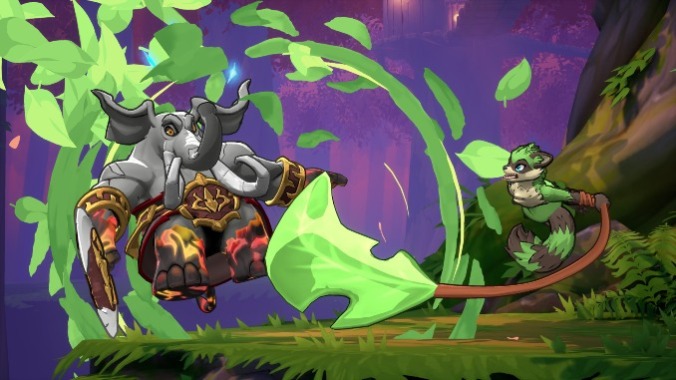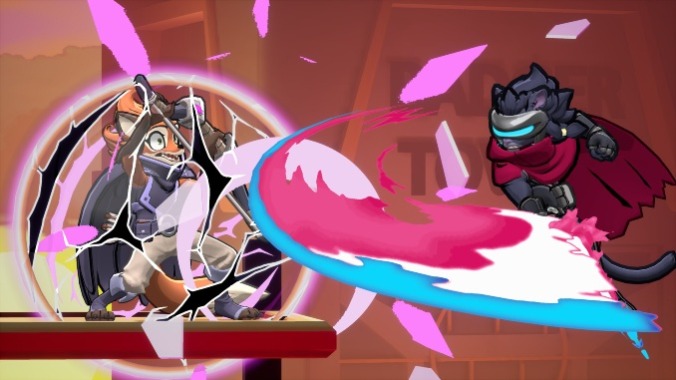Rivals of Aether II Is A Well-Crafted Homage To One of the Best Fighting Games Ever Made

More than 20 years later, a specific entry in the Super Smash Bros. series continues to maintain a vice grip on wayward individuals who enjoy pressing as many buttons as possible while tearing through the world’s supply of remaining GameCube controllers at an alarming pace; for those not keyed into this niche scene, I’m talking about Super Smash Bros. Melee. The game still has a very active competitive scene several decades later because its unique physics engine offers a canvas of player expression with unconquerable depth and near-infinite room for optimizations, drawing in new generations of players even as the company that created it attempts to squash this grassroots scene.
While there are plenty of games that aim to ape Super Smash Bros. in general, so much so that there’s now a term for it, platform fighters, there have also been a couple that have drawn on Melee in particular. There’s the Project Melee mod, which tried to make the sluggish Brawl more like its direct predecessor and cult hits like Slap City or the early access Fraymakers. But of these, the one that probably made the most headway was Rivals of Aether. It was a fast-paced fighter with a varied cast and a lot of great ideas, but at least at launch, it suffered from lackluster online play due to its use of delay-based netcode. But now we have a follow-up in Rivals of Aether II, a game that takes things even further in the direction of its inspiration while delivering silky-smooth multiplayer battles. In short, Rivals II very much seems to have the special spark that made Melee’s core gameplay loop so compelling, even if this spiritual sequel has some shortcomings that will affect those who can’t already wavedash in their sleep.
On the surface, Rivals II has all the classic features of platform fighters. The goal is to knock your opponents offstage, in this case, three times, before they can do the same to you. You can play 1v1, 2v2, or a three-four-person free-for-all. Each character has special moves that can be performed by pressing the special button with a direction input and a series of normal or strong attacks that can be performed in the same way. However, where this game distinguishes itself from most other platform fighters (aside from Melee and its disciples) is in how free-form and flexible its movement is.
One of the things that makes Melee so rewarding is that it features many player-discovered techniques that let you get around quicker, and while many of these were a happy accident, in Rivals II, they’re recreated as an intentional design decision that leads to fast-paced, exciting play. All the classics are here: you can dash dance (running back and forth to try to get your opponent to whiff), wavedash (air dodging into the ground to get horizontal momentum while being able to use any grounded attack), moonwalk (running and then switching directions to run backwards), shield drop (canceling your shield into dropping through a platform), and well, you get the idea. However, perhaps the biggest change compared to its inspiration is that most of these techniques are much easier to do in this version—it seems like the buffer window is larger, and there’s generally more leniency in timings.

This more straightforward execution is in keeping with a general trend in modern fighting games, from Street Fighter to Guilty Gear, where the barrier to entry is lowered, and at least in this case, it feels like a great choice. This game is deep in plenty of ways, but it feels wise to make it a bit easier to get to the fun part of the experience, where you’re using these tools to chain together complex maneuvers until you’re darting around the stage like a blur—there will also be less of those moments where you accidentally reverse laser off stage with Falco and fall into the blast zone like a rock, cursing the day you saw a Mango combo video until you land a sick dair spike and feel good again. This range of easier-to-perform advanced tricks, combined with the baseline quick movement and responsive controls, results in a buttery smooth play that nails the most important element of this sub-genre: being able to schmoove around the stage as if the goal is showcasing your APM instead of besting your opponent.
And while the game is easier than Melee in a technical sense, it still seems to share a great deal of depth, in large part because of its cast. At first glance, many of them seem to line up with Smash Bros. characters in obvious ways: Clairen’s laser-sword strikes look suspiciously similar to Marth’s moveset, and Zetterburn’s neutral special is a one-frame nightmare attack clearly inspired by Fox and Falco’s shine. But then there are just as many characters without a clear analog, like the blazing-fast Maypul, who can set up killer plants and zoom around the stage with vines. Most of these characters have a fairly straightforward initial game plan, but almost all of them have interesting fighter-specific techniques that offer lots of room to optimize, giving room for player expression and truly disrespectful combos. It also helps that basically all of their attacks have a strong sense of visual feedback that makes attacks feel appropriately weighty, and every time I land Zetterburn’s up smash when my foe is in a fire state (this makes them fly farther), I have to resist the urge to start vigorously nodding my head.
As for character balance, my gut feeling at the moment, which will probably age poorly, is that things are relatively even between the cast (except for whoever I’m playing at the moment), which speaks to how each character’s toolset has some zest and the capability to do heinous things. My only real issue when it comes to the current roster is that it’s quite small, with an initial lineup of only ten combatants. While there are four free characters planned for next year, and the fighters here have plenty of intricacies while playing quite differently from one another, it would be nice if a bit more of the crew from Rivals 1 was here out of the gate.
-

-

-

-

-

-

-

-

-

-

-

-

-

-

-

-

-

-

-

-

-

-

-

-

-

-

-

-

-

-

-

-

-

-

-

-

-

-

-

-









































